Helen H. Moore's Blog, page 324
August 21, 2017
Watch: masked man takes sledgehammer to U.S.’s oldest Christopher Columbus monument

Christopher Columbus Monument in Baltimore, Maryland (Credit: AP)
Baltimore was one of the first cities to act quickly after the riots in Charlottesville, Virigina by removing several Confederate monuments last week. One Baltimore resident, however, decided that wasn’t enough and took matters into his own hands by laying a hammer to the oldest monument to Christopher Columbus in North America.
“Christopher Columbus signifies the initial invasion of European capitalism into the Western Hemisphere,” said the man, who identifies as “Ty,” a Baltimore City resident and narrator of a video posted to YouTube today documenting the destruction.
He continued:
Columbus initiated a centuries-old wave of terrorism, murder, genocide, rape, slavery, ecological degradation and capitalist exploitation of labor in the Americas. That Columbian wave of destruction continues on the backs of Indigenous, African-American and brown people.
The footage follows a man walking, sledge hammer in hand (it’s unclear if this person is Ty). Once the man reaches the memorial obelisk, he tapes a sign to the statue’s base that reads: “THE FUTURE IS RACIAL AND ECONOMIC JUSTICE.”
As the man smashes the hammer into the monument — destroying the plaque at the base of the obelisk — another man holds a sign that says: “RACISM TEAR IT DOWN.”
Confederate monuments have garnered more and more of the country’s attention and demonstration since the white supremacist protest in Charlottesville over a week ago. Organizers of a rally in Columbus, Ohio Friday sought to remove the city’s Columbus statue. There was a similar rally in Detroit as well.
In the video, “Ty” questions: “What kind of culture goes to such lengths to build such hate-filled monuments? What kind of culture clings to these monuments in 2017?” The video finishes with organizations to reach out to and a suggested reading list.
See the full video below:
Susan Collins becomes first Republican in Congress to say Trump may not be GOP nominee in 2020

FILE - In this June 21, 2016, file photo, Sen. Susan Collins, R-Maine, speaks during a news conference on Capitol Hill in Washington. (Credit: AP Photo/Evan Vucci, File)
Susan Collins, the Maine senator who has become an intraparty thorn in President Donald Trump’s side, became the first GOP elected official to openly question whether he should be chosen to represent the party in the 2020 election.
Asked during an MSNBC interview on Monday about whether Trump would be re-nominated in 2020, Collins said “it’s far too early to tell” if the president would win. Traditionally, presidents have faced no opposition from their own party in their efforts to run for re-election.
Collins also said that she did not vote for Trump in last year’s general election.
“I didn’t support the president when he was our party’s nominee. That was a very difficult position for me to take. I’d never taken it before. Instead, I wrote in the name of [House Speaker] Paul Ryan, and that was very hard for me to do as a lifelong Republican,” Collins said.
The centrist Republican senator was also asked about Trump’s response to recent violence at the fascist-organized rally in Charlottesville, Virginia on Aug. 12.
“The president had a moral obligation to speak with absolute clarity from the very beginning, and stick with that, not shift back and forth, to denounce the neo-Nazis the white supremacists the anti-Antisemitism that we heard,” Collins told host Hallie Jackson.
She continued: “Unfortunately he wavered back and forth. There are no good neo-Nazis. In this case, I think the president failed to meet the standard that we would have expected a president to do at a time like that. There should be no place for hatred, bigotry, and racism in this country and he should have said that very clearly. He did at times, but then he wavered back and forth in his message.”
Collins has been the leader among the small number of Republicans in Congress who have opposed the party’s efforts to cut federal spending instead of merely fixing issues that some health care customers, particularly ones in smaller metropolitan areas, have had with the Affordable Care Act. When Barack Obama was president, she was the sole member of the GOP to vote against a series of show votes that party leaders held to repeal Obama’s signature achievement, knowing that he would not sign them.
Since Trump’s repeated efforts to defend members of the Charlottesville rally as “very fine people,” multiple Republicans have criticized the president’s expressed sentiments. Even more have made their own condemnations of the racist groups involved with organizing the event.
Senate Foreign Relations Committee Chairman Bob Corker has also sharply criticized Trump, telling his Tennessee constituents that the president “has not yet been able to demonstrate the stability, nor some of the competence, that he needs to demonstrate in order for him to be successful.”
On Sunday, John Kasich, the Republican Ohio governor who refused to endorse Trump after being defeated by him as they both sought the GOP’s 2016 nomination, did not definitively rule out a primary challenge to the president.
“I don’t have any plans to do anything like that. I’m rooting for him to get it together,” Kasich told CNN host Jake Tapper. “We all are. I mean, we’re only, like, seven months into this presidency.”
Heather Heyer picked her side
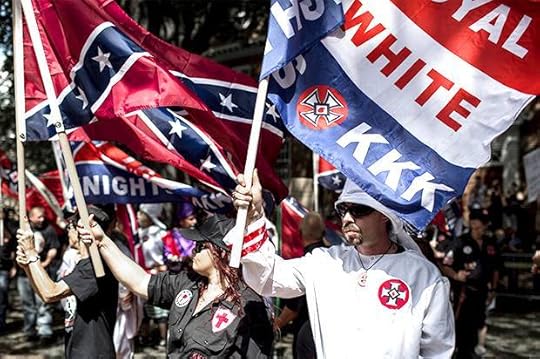
The Ku Klux Klan protests on July 8, 2017 in Charlottesville, Virginia. (Credit: Getty/Chet Strang)
The tragic death of Heather Heyer, the 32-year-old paralegal who was killed when a motorist plowed into a crowd of counter-protesters who had gathered to oppose a white supremacist rally in Charlottesville, Va., may, in its own way, help prefigure the rebuilding of a more genuinely transformative Left in the United States.
Don’t get me wrong; there is little to celebrate in the bloody onslaught in Charlottesville. Still, the passing of Heyer, who was reportedly a member of the Industrial Workers of the World (IWW), reminds us that a segment of egalitarian-minded, white anticapitalists remain among the ardent foes of racism in American life. Amid the “race versus class” debates currently dividing progressives, it is refreshing to note that some young leftists still believe that the transition to a more humane economy requires a frontal assault on white supremacy.
This principle has a storied past. Battles against racial hierarchy helped shape the sensibilities of workers of all colors within the IWW, the Communist Party, and the Congress of Industrial Organizations during the first half of the 20th century. The IWW, an anarcho-syndicalist union whose members are called “Wobblies,” was known for organizing across lines of race and ethnicity. Its direct actions and its willingness to recruit African Americans and immigrants led to its violent repression by government agents and corporate goons in the wake of World War I.
Decades later, during the civil rights era, white Americans of various ideological backgrounds took part in what was essentially a black workers’ rebellion. Viola Liuzzo, a white Unitarian Universalist who was murdered by the Ku Klux Klan in 1965, was among the progressives who gave their lives for the cause of racial justice. Less remembered are the three white members of the Communist Workers Party, a Maoist organization, who were killed along with black activist Sandi Smith and Latino organizer Cesar Cauce when parading Klansmen and Nazis fired into a throng of counter-protestors in the 1979 Greensboro Massacre.
Black and brown people, it must also be said, have always performed the most arduous labor — and paid the greatest cost — in the fight against white nationalism. One study found that 4,075 African Americans were lynched between 1877 and 1950 at the hands of the Klan and similar groups.
While we must constantly resist the erasure of black martyrs, past and present, it is important to acknowledge white “race traitors” who have made the ultimate sacrifice. For they offer powerful evidence that race is not destiny — that some modest portion of white Americans are capable of rejecting the corrupt privileges of whiteness.
Comparing disparate historical moments can be dangerous. We need to understand the specific factors behind the current wave of white nationalist terror in the United States. At the same time, as people of color and others attempt to fashion a response to the savagery of the far Right, it is useful to recall the traditions of left antiracism that have long bolstered quests for redistributive justice.
By all appearances, Heyer was an heir to such traditions. Now the Left should honor her as a symbol of radical commitment.
Though Heyer did not choose martyrdom, she must have recognized the risks of joining the front lines of a confrontation with fascism. Based on her reported affiliation with the Wobblies, one imagines that she rushed to the barricades in Charlottesville not out of pure benevolence or noblesse oblige, but because she recognized her personal stake in the creation of a truly democratic United States in which unjust hierarchies are eradicated and all are able to realize their full potential. Perhaps she understood that because white supremacy, like capitalism itself, is predicated on massive exploitation, it narrows practically everybody’s opportunity to experience real equality, dignity, and peace.
Such awareness is as significant as it is rare. Remember that for some time now, white America has displayed an acute unwillingness to move beyond whiteness as a political identity and as a framework for comprehending society. The alarming proportion of white folks, across class and gender, who voted for Trump is just one indication of the salience of white nationalist consciousness. Understandably, many people of color resent the white masses that swept a racist demagogue into the White House and that remain largely indifferent to the suffering of non-white people, even as their own material fates decline.
As political symbol, Heyer thus represents an alternative not just to white moral paralysis, but also to the duplicity of those progressives who regard racial justice as, at best, a secondary concern. Her martyrdom may help underscore a larger truth; namely that a conscientious strand of radicals, rather than liberals writ large, constitute the vital antiracist constituency among white folks.
This is not to elevate Heyer into some sort of political ideal. I am suggesting only that her death may hold lessons for a fragmented Left struggling to reboot itself. For one glimpses in her final act of solidarity — joining an ideologically and racially diverse gathering to face down neo-Nazis—a route beyond the paternalism and condescension that too often characterizes white left encounters with black and brown people. By the same token, Heyer’s death may serve as a reminder to some people of color that all white leftists cannot be dismissed as self-serving opportunists.
Heyer was no savior. She was merely a comrade on the line, someone striving concretely to resist domestic terrorism while working toward broad social transformation.
Yet her sacrifice must be understood and appreciated. She died not as a cosmopolitan capitalist (think of the ease with which Democratic Party elites espouse multiculturalism) but as a sister in a working people’s struggle. While liberals wrung their hands and mouthed platitudes, she embodied the possibilities of genuine solidarity. Perhaps her memory can inspire greater urgency and awareness as the Left attempts to forge new traditions of multiracial resistance.
Here are the best Twitter reactions to Trump looking directly into the eclipse

Donald Trump points to the sun as he arrives to view the solar eclipse. (Credit: AP/Andrew Harnik)
If you couldn’t resist the temptation to get a glimpse at today’s solar eclipse without protective glasses on, you’re insane — but you’re also not alone. NFL star Odell Beckham Jr. posted a video on Instagram of him staring directly at the cosmic event.
In much less surprising news, Donald J. Trump — the 45th president of the United States — went against all general scientific advice and the direct, personal warnings of his staff and stared at the eclipse with his unprotected eyes like a proud and stubborn five-year-old child.
While watching the eclipse with members of his family and administration, Trump joyously raised two thumbs up when asked his opinion of the eclipse, later mouthing the word “beautiful” to a group of reporters outside of the White House. In Trumpian fashion, the elected leader of the free world then took off his eclipse-watching glasses to take a peek of the cosmic event, this despite the fact that NASA scientists have strongly urged otherwise.
“The only safe way to look directly at the uneclipsed or partially eclipsed Sun is through special-purpose solar filters, such as ‘eclipse glasses’ or hand-held solar viewers,” NASA said in a guide for viewing the eclipse safely. “Homemade filters or ordinary sunglasses, even very dark ones, are not safe for looking at the Sun.”
Despite these warnings — and the advice from an aide who shouted “Don’t look” as he took his glasses off — Trump risked it all, not once, but twice. Such is the bold, risk-taking spirit of the man this nation saw fit to make its leader. He stole two quick glances at the cosmic event before the national press (and, thus, the world), allowing those who use social media room for comment.
President Trump, First Lady Melania Trump and Barron Trump wear their eclipse glasses to watch the solar eclipse as it crosses over D.C. pic.twitter.com/FGjLHOj9TO
— ABC News (@ABC) August 21, 2017
Aaaaaand here's your photo of Trump looking straight at the eclipse pic.twitter.com/5vv6sVTDIl
— Stefan Marolachakis (@stefanmymind) August 21, 2017
As he did this, someone in a crowd of aides below shouted "Don't look." pic.twitter.com/dtfSLEzcAZ
— Ted Mann (@TMannWSJ) August 21, 2017
it's okay the sun didn't go away forever @EricTrump
— Simon Maloy (@SimonMaloy) August 21, 2017
— Adam Weinstein (@AdamWeinstein) August 21, 2017
Most adorable eclipse photo goes to… Jeff Sessions pic.twitter.com/9w4GtWRfnV
— Joe Perticone (@JoePerticone) August 21, 2017
Worth noting that the only two things all summer which have kept Trump out of the news for a day are a solar eclipse and OJ Simpson
— Ben Jacobs (@Bencjacobs) August 21, 2017
Sure hope Trump tweets that the Obama administration never pulled off a total eclipse
— David Lazarus (@Davidlaz) August 21, 2017
Media in 2016: "No, Trump can't win."
Media in 2017: "No, staring at the eclipse won't give you telekinetic powers."
— Dave Weigel (@daveweigel) August 21, 2017
TODAY: Advisers Say Trump Will Show Restraint During Eclipse
TOMORROW: Trump, Blinded and Drunk on Sun’s Rays, Pledges to Destroy the Moon
— Jason O. Gilbert (@gilbertjasono) August 21, 2017
Today in Things I Didn't Believe Would Actually Happen: President Trump looked at the #eclipse without glasses. Twice. #SolarEclipse2017 pic.twitter.com/c6zPbx7RYd
— Anna Massoglia (@annalecta) August 21, 2017
Trump on eclipse: "My inauguration had bigger crowds.The moon treated the sun very unfairly—SAD! It better stop, or be met w/fire & fury."
— Trump's Prison Shoes (@vespavoshka) August 21, 2017
Though Trump disregarded all health warnings against looking at the eclipse without wearing the proper eyewear, there is no suggestion from the White House that he has gone blind and will spend the rest of his presidency stumbling around the East Wing, refusing to use a cane or guide out of sheer pride.
We looked at Trump’s Twitter interactions for more than a year. A lot of them are suspicious.

Donald Trump; Benito Mussolini (Credit: AP/Getty/Salon)
President Donald Trump tweets . . . a lot. But along with his usual flurry of tweets attacking the media, lamenting fake news, or criticizing practically anyone who disagrees with him, Trump has another Twitter habit — quoting his supposed supporters’ tweets. A look at over a year of Trump’s retweets, quote tweets, and tweets in which he quoted another Twitter handle has left a lot of questions.
Using the Trump Twitter Archive, Media Matters audited the president’s Twitter handle, @RealDonaldTrump, between April 1, 2016, and July 31, 2017, focusing on retweets, quote tweets, and tweets where @RealDonaldTrump quoted another Twitter handle. We used that list to identify unverified accounts that he quoted or retweeted, which we then checked for the original tweet and suspicious or bot-like activity. If an account seemed suspicious (for example, it posted an unrealistic number of tweets or exclusively pro-Trump messages), we examined its tweeting habits during the weekend of the second presidential debate (October 6 to 10, 2016). Finally, if an account seemed like a bot, we reviewed its tweeting habits between August 2015 and January 2016.
Factors used to identify suspicious behavior included the date the handle was created; the number of tweets sent; the general frequency of tweets and use of hashtags and images; the content and frequency of tweets the weekend of the second debate; and what the account tweeted before the October 2015 primary season. Here’s what we found:
1. Trump retweeted and thanked a woman named Nicole Mincey over the weekend of August 5, 2017, as was widely reported by numerous outlets. Mincey was suspected to be a bot, but was later identified by BuzzFeed and others as a real Trump supporter who was using her page to sell merchandise. It was odd for Trump to simply retweet an unknown account because, based on Media Matters’ findings, Trump typically retweets only verified accounts, such as Fox & Friends’ Twitter account or those of his staffers and family members.
However, Trump frequently does quote tweets from unverified accounts (not using the Twitter “quote tweet” function but literally quoting a tweet). These quote tweets have been called out in the past for featuring white supremacists, and it appears that he also quotes tweets with some frequency from accounts that appear to be either fake accounts or bots.
2. At least 12 of the Twitter handles that Trump quoted in tweets have had their accounts suspended, and at least 16 additional handles have been deactivated. For example, on May 15, 2016, Trump quoted a tweet from the handle @TakingIt_Back:
“@TakingIt_Back: @nytimes keep shining….the ppl will not let the media dim your light…we no longer believe them! #Trump2016” Thanks.
— Donald J. Trump (@realDonaldTrump) May 15, 2016
However, when one tries to go to the page for @TakingIt_Back now, it redirects to an “Account Suspended” page. This is true for Trump’s quoted tweets of @Gengm7, @patrioticpepe, @EyeCandyTMGayle, and @tweak626 as well as others.
3. On at least six occasions, Trump retweeted tweets from accounts that have only one or two tweets on their page — and currently have largely inactive profiles.
While we were unable to locate the original tweets from these accounts, they are still active. For example, on August 29, 2016, Trump quoted a tweet from @RhondaR:
“@RhondaR: Thank-You Clarence Henderson for telling @cnn you know racism & it’s not DonaldTrump https://t.co/fSBPxZU8Gu via @BreitbartNews“
— Donald J. Trump (@realDonaldTrump) August 29, 2016
When one goes to @rhondar’s page now, this is what they find:
Make up to $40/hr working from home! http://t.co/VIPIwBzD
— rhonda riley (@rhondar) September 29, 2011
Similar account activity can also be seen on the pages of users Trump quoted in these tweets.
4. Trump has quoted tweets from the handles of at least two suspected bots, one of which is the well-known, now-suspended @PatrioticPepe. The other handle, @Don_Vito_08, has been described as “a partly automated pro-Trump cyborg.” @Don_Vito_08 was created soon after Trump announced he was going to run for president; the account began aggressively tweeting pro-Trump memes in December 2015 and anti-Clinton memes after the presidential primaries. The account has over 33,000 followers and claims in its Twitter bio that it was retweeted three times by Trump.
“@Don_Vito_08: Thank You Mr. Trump for Standing up for Our Country! #VoteTrump2016 JOIN ME ON THE #TrumpTrain
U.S. and Mexico immigration: Portraits of Guatemalan refugees in limbo
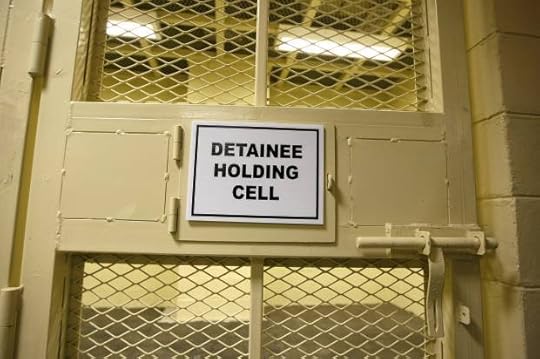
(Credit: Reuters/Jonathon Burch)
Many of Guatemala’s refugees produced by its long civil war are still stateless today.
The war lasted between 1954 and 1996 and inflicted significant harm, particularly on indigenous Mayans. The conflict prompted 200,000 Guatemalans to flee to Mexico, where up to 43,000 refugees established settlement camps. For more than a decade I have conducted research in La Gloria, Mexico, the largest of these settlements, near the border of Guatemala.
Currently, due to strict naturalization laws, more than 27,000 Guatemalans throughout Mexico remain stateless. In turn, many Guatemalan refugees have migrated to the U.S., only to face similarly draconian policies.
In 2007, I began a photo-documentary project with my brother Manuel Gil, a professional photographer. Our aim was to learn about the challenges these people face as stateless refugees for more than 30 years, and the impact immigration policies have on their families. Here’s what we found.
Stateless in Mexico
In 2014, Gaspar Felix Juan, a community leader from La Gloria, requested my help to obtain legal status for several stateless Guatemalans in Mexico. The formal end of a legalization program (1995-2005) in Mexico for refugees who fled Guatemala’s civil war left many without legal status. All of them lived in former refugee settlement communities throughout the southern state of Chiapas. In collaboration with Mexican attorney Julia Torres, we filed a grievance to the Mexican government regarding the prolonged delay in processing naturalization claims. We also requested the legalization of 26 petitioners.
María Miguel Pedro, one of the petitioners, was 86 years old at the time. The mother of five, with 40 grandchildren — all Mexican-born citizens — has remained stateless in Mexico for more than 30 years. In 2016, she suffered a stroke, leaving her paralyzed and mute. Lack of legal status limits her access to public health insurance. Consequently, she relies on her frail 90-year-old husband (who has legal status) to obtain affordable medications.
Another petitioner, Ángel Pascual Francisco, is a father of four. Two of his children live in the U.S. When asked why he did not join them, he said, “I am fearful that I will get caught entering the U.S., and as I don’t have any papers identifying my national origin, I am afraid to be sent to Guatemala.”
When asked what fueled such terror, he answered: “At a young age I witnessed my father, my [pregnant] sister and younger [five-year-old] brother get killed in Guatemala.” This violent episode continues to haunt Ángel, who suffers from anxiety and depression. Legal status would allow Ángel to travel and seek employment in Mexico without fear of deportation to Guatemala.
Guatemalan exiles, despite lacking legal status, have built connections with partners and established families in Mexico and the U.S. In contrast to frequent media coverage that depict migrants as threats, our work attempts to represent Guatemalan exiles in a dignified light. We hope to show that, like millions of migrants across the globe, these people seek a sense of belonging in their host nation state.
Migration to Mexico
These portraits are part of a bigger history of Mexico’s complex relationship with indigenous and migrant populations.
Since its founding, the Mexican government actively promoted immigration policies that favored entrance of white immigrants from Europe. The Mexican government also encouraged out-migration during the 20th century, fueled by U.S. policies and labor demand. These immigration policies informed how the Mexican government received Guatemalan refugees.
A year before the war in Guatemala ended, the Mexican government announced a naturalization program, but it wasn’t until 2001 that Mexico reduced requirements for legal entry and provided temporary visas to Guatemalan refugees. The travel and employment restrictions on these visas, however, compounded poverty among refugees. Research has shown that bureaucratic mismanagement undermined the Mexican legalization program. The departure of NGOs and humanitarian agencies who were supporting refugees decreased political pressure on the Mexican state to support refugees. Thus, the government ended the legalization program in 2005.
Violence and insecurity in Guatemala since the war is still pushing people to flee, and prevents many who fled during the war from returning.
Migration to the US
The U.S. too has promoted draconian immigration enforcement measures. As the American Immigration Council has stated, “Whole new classes of ‘felonies’ have been created which apply only to immigrants [across legal status] . . . In short, immigrants themselves are being criminalized [for minor offenses].” This has fueled a disproportionate rate of Guatemalans being deported. Several of the stateless people we met during our research lived with the threat of being deported, or faced an actual deportation order from the U.S.
One of these individuals is Amalia Manuel Pedro. In 2006, Pedro faced arrest at a work-site raid and was charged with identity theft. She was deported from the U.S. to Mexico. As a result, both her husband and son, Gaspar Jr., joined her in Chiapas, becoming “de facto” deportees. De facto deportation occurs when parents take their child with them when they are deported. A Pew Hispanic study estimates that some of the 500,000 U.S.-born children counted in the 2010 Mexican Census had accompanied parents sent back to Mexico by U.S. authorities.
Gaspar Jr. faced obstacles in obtaining social services in Mexico. Such obstacles have been identified for other U.S. citizen youth who “may be subject to greater economic hardship; a weaker social safety net; difficulties in school; and, potentially, the threat of social instability and physical danger.” Amalia’s ongoing statelessness makes her vulnerable to yet another deportation from Mexico.
U.S. policies that created Pedro’s situation increasingly inform border enforcement practices in Mexico. Fortification of the southern Mexican border hampers the options available to people fleeing violence.
U.S. foreign policy has sought to bolster bilateral security measures. As a result, Mexico deported more than 165,000 people who were from Guatemala, Honduras and El Salvador in 2015. That’s twice the number of U.S. deportations to these countries.
The unwelcoming climate is all the more significant for stateless and indigenous migrants. While our petition to obtain legal status for all 26 stateless people who fled the Guatemalan military conflict was approved in late 2016, their indigenous appearance still marks them as subordinate in Mexican society. As a result, several may still face intimidation by immigration agents, who have been found to discriminate against indigenous people and exacerbate human rights violations in Mexico. This hostile state has prompted human rights organizations to call for conditioning U.S. funding for fortifying Mexico’s borders on efforts to protect the rights of migrants.
Oscar Gil-Garcia, Assistant Professor, Binghamton University, State University of New York
The Daily Caller has a white nationalist problem
 On Monday, August 14, the Daily Caller very quietly removed white nationalist Jason Kessler’s contributions to the publication after the violence and chaos in Charlottesville. The white nationalist “Unite the Right” rally was organized by Kessler.
On Monday, August 14, the Daily Caller very quietly removed white nationalist Jason Kessler’s contributions to the publication after the violence and chaos in Charlottesville. The white nationalist “Unite the Right” rally was organized by Kessler.
But the white nationalist problem at Tucker Carlson’s Daily Caller, a conservative political outlet launched in 2010 as a “response” to the Huffington Post, is bigger than just Kessler. Throughout the 2016 election and since, the Daily Caller has not only published the work of white nationalists, but some of its writers have routinely whitewashed the Alt-Right, while one editor there is an associate of key Alt-Right figures. Two Daily Caller contributors, including a senior investigative reporter, were recently announced as speakers at the upcoming white nationalist H.L. Mencken Clubconference organized by Paul Gottfried, a godfather of the Alt-Right.
As for recent Daily Caller contributors, take Peter Brimelow; the English white nationalist is the founder of the website VDARE, named after Virginia Dare, the supposed first white child born in the new world. VDARE is a major hub for white nationalists and anti-Semites. Brimelow is a leading figure on the Alt-Right and has been published three times in the Daily Caller in recent months, with his firstpiece coming in March defending Rep. Steve King, a hero to white nationalists, who recently tweeted, “Geert Wilders understands that culture and demographics are our destiny. We can’t restore our civilization with somebody else’s babies.”
A few years ago, the Daily Caller publishing the work of an established white nationalist would be unthinkable. Take the response from Washington, D.C., senior contributor Matt K. Lewis following the firing of white nationalist John Derbyshire from National Review in 2012 for writing a racist screed regarding the Trayvon Martin shooting titled, “The Talk: Nonblack Version.” The article, presented as conversation between a white parent and their child included lines like, “A small cohort of blacks — in my experience, around five percent — is ferociously hostile to whites and will go to great lengths to inconvenience or harm us.” It also included tips like, “If planning a trip to a beach or amusement park at some date, find out whether it is likely to be swamped with blacks on that date.” Lewis’ response in the Daily Caller to Derbyshire’s 2012 firing was, “Some people aren’t worth the [sic] fighting for. Some things are indefensible. This is one of those cases.”
Following his firing, Derbyshire joined VDARE as a regular contributor, and now his boss, Brimelow, is contributing articles to the Daily Caller.
But Brimelow is only a contributor. Despite his attempts to hide it, Daily Caller deputy editor Scott Greer has questionable ties to many younger members of the white nationalist movement. The activist website OverthrowDotCom published multiple photographs of Greer in late 2016 documenting his extensive relationships with other white nationalists. In the expose, mostly taken from Facebook, Greer is photographed with hardcore white nationalists such as Devin Saucier, a man who works as an assistant to Jared Taylor of American Renaissance. One of the most prominent white nationalists of the past quarter century, Taylor once wrote, “Blacks and whites are different. When blacks are left entirely to their own devices, Western civilization — any kind of civilization — disappears.”

Saucier is a regular attendee at white nationalist gatherings, including Alt-Right leader Richard Spencer’s National Policy Institute (NPI) conferences. Greer is also pictured with another white nationalist, Marcus Epstein, another friend of Spencer’s who pled guilty in 2009 to drunkenly assaulting an African American woman in Washington, D.C., which occurred two years prior.
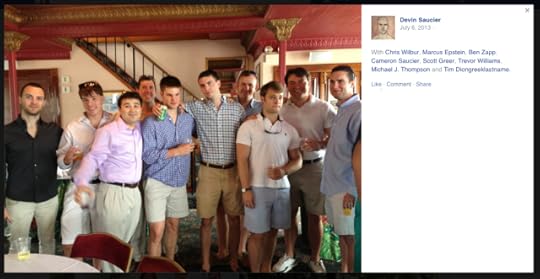
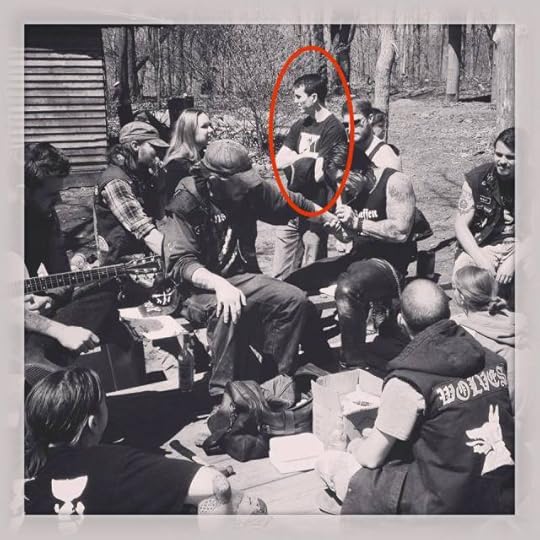
In these photos, Greer is seen wearing a Youth for Western Civilization (YWC) t-shirt. YWC is a now defunct white nationalist student group founded by Epstein and another white nationalist, Kevin DeAnna. DeAnna has been involved with the neo-volkisch collective called the Wolves of Vinland, and Greer has been photographed at a Wolves gathering with Saucier and others.
An active member of the Wolves is Maurice Michaely, a man who was sent to prison for burning down the black historical Mount Pleasant Baptist Church in Haymarket, Virginia. According to the “Fools of Vinland” blog, Greer liked a picture of Michaely that was posted on Facebook in 2014, showing him in prison with the letters 666 scrawled onto his hand.
While Greer has scrubbed his Facebook page, his Twitter account still shows that he “follows” a number of white nationalists, including Tim Dionisopoulos of YWC who Greer is sometimes photographed with, as well as Richard Spencer and Steve Sailer of VDARE.

Greer’s writings also indicate his white nationalist views, though calibrated for a more mainstream conservative audience. He recently published a book, “No Campus for White Men” — an attack piece focused on the evergreen right-wing grievance of “political correctness” on college campuses — which received glowing reviews from white nationalist websites including VDARE, American Renaissance and Counter Currents. Greer, originally from Tennessee, published a staunch defense of the Confederate battle flag for the Daily Caller in July of 2016, writing that a National Association for the Advancement of Colored Peoples leader’s call to remove Confederate soldiers from a carving on Stone Mountain in Georgia was “remarkably similar to the tactics of jihadis like ISIS and the Taliban.” Other stories written by Greer for the Daily Caller include tropes that are often peddled by white nationalists including black-on-white crime, and that immigrants are bringing disease to the country.
In a 2014 piece, Greer dismissed an article in Time magazine on the threat right wing anti-government groups and individuals pose to law enforcement. “A thorough search of Time’s archive produced no stories about the threat that communists, black nationalists or prison gangs pose to police,” he claimed. In a May 2015 opinion piece, Greer heaped praise on St. Louis County district attorney Bob McCulloch for his handling of the Michael Brown case, despite McCulloch’s history of bias and the widespread criticism he received for his actions during the aftermath of the shooting.
One of Greer’s fixations is on downplaying the problem of sexual assault on college campuses. In a July 2015 opinion piece, Greer defended then-candidate Donald Trump who called Mexicans “criminals and rapists,” writing, ”Except that it’s still Hispanic men who are raping these women, and the countries where illegal immigrants primarily come from countries [sic] have sexual assault rates that dwarf the phony numbers for American universities. The eight-in-ten figure for migrant women proves that there is a very real rape culture among illegal immigrants, contrary to what some fact checkers might want you to believe.”
In a June 2015 piece, Greer again whitewashed sexual assault on campuses, writing, “[I]t’s the perverse fantasy that thousands of women will be raped at some point during their college years,” before making a statement that is often heard from Alt-Right misogynists. “On top of that,” Greer opines, “more innocent men will find themselves accused of these crimes and see their lives ruined by a culture that nurses and refuses to punish false rape accusations.”
The day after the 2016 election, Greer tweeted, “Now as a white man, I can finally feel safe in America.” Richard Spencer is clearly a fan of Greer’s, retweeting him a number of times.
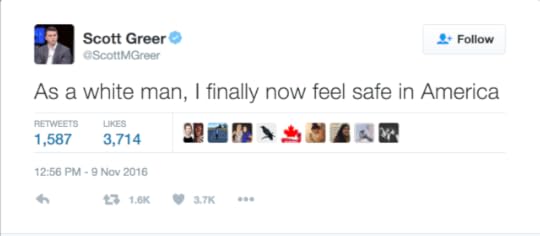
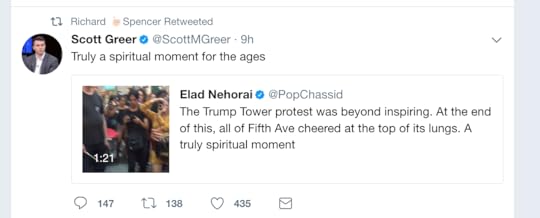
Unite the Right’s Jason Kessler is another white nationalist who contributed to the Daily Caller in 2017. His three pieces just happen to span some of the recent causes common to both white nationalists and some mainstream conservatives: The preservation of Confederate monuments, the hyping of grisly crimes committed by the M-13 gang as a frame to attack immigration, and the manufacturing of campus free speech martyrs, in this case Ann Coulter.

Kessler is a fresh face on the scene, coming to prominence in late 2016 when he launched a vendetta campaign against Charlottesville, Virginia, Vice-Mayor Wes Bellamy, following Bellamy’s call for the removal of a statute of Robert E. Lee from a downtown park. Kessler started a petition to oust Bellamy and also founded an anti-immigrant/white nationalist organization, Unity and Security for America, and used it to vocally support Corey Stewart, pro-Confederate Virginia gubernatorial candidate. Kessler was arrested in January for punching a man while he was gathering signatures for his anti-Bellamy petition. After video evidence showed Kessler punching the man unprovoked, he pled guilty to misdemeanor assault and was later sentenced to 50 hours of community service.
His petition campaign failed in March of 2017, but Kessler continued attacking Bellamy, sharing a number of racist articles on social media, including one that referred to Bellamy as a “pavement ape” and “Councilman Dindu,” a reference to a racist meme. At the same time he was writing for Daily Caller, Kessler also wrote for VDARE.
On May 14, the dispute over the Confederate statues galvanized white nationalists who convened in Charlottesville to protest, with Richard Spencer leading a torch-lit march. Kessler was arrested for a second time in four months for not obeying an officer’s orders.
Nevertheless, the next day Kessler published a glowing account of the protest on the Daily Caller, complete with photos from his own Twitter account (#SaveLeeandJackson). He noted that though not all of the speakers were Southerners, they, “sympathized with the fight to preserve a history which they say is increasingly under attack by Left-wing ideologues who want to tear down statues, change the names of buildings and rewrite history books to place white people in an unsympathetic and even hostile light.”
ProPublica pointed out glaring omissions from Kessler’s report, writing, “It didn’t disclose that its author, Jason Kessler, is supportive of white supremacist groups, and on the day of the march had himself made a speech to the protesters in which he praised fascist and racist organizations, thanked a prominent Holocaust denier, and declared the beginnings of a cultural “civil war.” The Daily Caller ended its freelance relationship with Kessler only after ProPublica contacted the organization for comment. Kessler’s LinkedIn page still lists him as a Daily Caller contributor.
White nationalist Paul Gottfried, who many credit with coining the phrase “Alternative Right” alongside Richard Spencer, recently announced the lineup for his annual H.L. Mencken Club conference, a white nationalist event that takes place in Baltimore each November and was co-founded by Spencer. One Daily Caller contributor Ilana Mercer and senior investigative reporter Richard Pollock are slated as speakers for this year’s event. Mercer and Pollok will be joined by Peter Brimelow. Mercer has written over 30 articles for the Daily Caller in the past year.
Mercer’s pieces contain racially charged rhetoric commonly found on white nationalist websites. Mercer’s own website contains praise from white nationalist John Derbyshire, who in 2007 called her, “ravishing, brilliant, and eloquent.” Writing for the Daily Caller just after the first Charlottesville rally, Mercer penned a piece titled, “Sanctuary City Mayor Trashes American Hero Robert E. Lee,” where she called Lee a “great American.” In another piece decrying black-on-white crime in her native South Africa, Mercer wrote, “Let not the swirl of statistics conceal the flesh-and-blood casualties of this black-on-white offensive. South Africa’s farmers, undeniably, are the focus of ethnocide. Contrary to the Syrians and Somalis streaming into the United States, they would make fabulous refugees, President Trump.” The article was reposted on Jared Taylor’s American Renaissance website the same day it appeared in the Daily Caller, and no wonder. Decrying and embellishing black on white crime is a key white nationalist trope, as is claiming to there is a systematic “white genocide” taking place in South Africa.
In one of her many anti-Muslim screeds written on the Daily Caller, Mercer wrote in May, “Policy makers and power brokers in the West have invited Muslim immigrants to live among us in the idiotic belief that, underneath the nose-bags (the burqa, the abaya and full-body swaddle), they were just like us.” Mercer, whose personal website carries the banner “Verbal Swordplay For Civilization,” is especially proud of the “nose-bag” line, using it in multiple columns and her book “The Trump Revolution.”
In March of 2017, Mercer wrote another racist piece for the Daily Caller fit for the pages of American Renaissance. Her concluding paragraph of an article titled, “Africa: Before and After Colonialism,” Mercer wrote, “When all is said and done, the West is what it is due to human capital — people of superior ideas and abilities, capable of innovation, exploration, science, philosophy. Human action is the ultimate adjudicator of a human being’s worth; the aggregate action of many human beings acting in concert makes or breaks a society. Overall, American society is superior to assorted African and Arab societies because America is still inhabited by the kind of individuals who make possible a thriving civil society.”

There is a long history of white nationalists contributing to mainstream conservative publications, such as the National Review. But the Daily Caller’s embrace of white nationalists reflects the resurgence of the nationalist right, ethno and otherwise, represented by President Trump. Trump’s campaign and Electoral College victory electrified the radical right and pulled the Overton Window further in their direction. Stephen K. Bannon’s elevation into the West Wing after running what he described as “the platform for the Alt-Right” in Breitbart was part of the jackpot shared by a rogue’s gallery of extremist political operators. This is also apparent in the administration’s immigration policy, which is almost perfectly aligned with the white nationalist movement, and was originally drafted in part by Ann Coulter. There’s no other way to understand why Daily Caller would hire Peter Brimelow as a contributor if not for Trump’s victory.
In his founding editor’s note Carlson wrote:
We see our core job as straightforward: Find out what’s happening and tell you about it. We plan to be accurate, both in the facts we assert and in the conclusions we imply. If we’re not, tell us
We’re telling you, Tucker. Your flagship website has a white nationalist problem.
An email to the Daily Caller’s executive editor Paul Conner seeking comment went unanswered.
August 20, 2017
These 5 common phrases you might use at work are actually highly offensive

In this photo taken on Friday, June 24, 2016, Gabriel Ionut, a 24-year-old Romanian who works as a traffic marshal, stands by a signal at a construction site in London. (Credit: AP Photo, Pawel Kuczynski)
People often say, “Your words don’t matter — it’s your actions that count.” Yet in reality, the way you communicate can speak volumes about your values. This is especially true in a professional environment, where everyone has the right to feel seen and respected. Unfortunately, coworkers sometimes use language that can be disrespectful, even if they don’t mean to.
Below are a few phrases that, regardless of intention, can be marginalizing.
Low-skilled labor
Thanks to our Cheeto in Chief, this one’s been getting lots of press recently. Investopedia defines “low-skilled labor” as “a segment of the workforce associated with a limited skill set or minimal economic value for the work performed. Generally characterized by a lower educational attainment, such as a high school diploma, GED or lack thereof, and typically results in smaller wages.”
While these jobs traditionally involve lower wages, they also require lots of practice and mental focus. Occupations that people often refer to as low-skilled” include cleaning, farm labor, grocery clerks, and retail employees.
Why is saying “low-skilled” not okay? Well, the term suggests that these jobs don’t require any brain power—which means the people holding them aren’t intelligent. Yet in reality, folks with these jobs are doing hard work to support themselves and their families. As a recent piece for Remezcla showed, numerous people turned out on Twitter after the Trump debacle to give a face to those who are “low-skilled:”
My “low-skilled” mom picked cotton as a kid and cleaned houses for nearly 30 yrs. I challenge you to do a month of either, @RealDonaldTrump.
— Gabe Ortíz (@TUSK81) August 3, 2017
My “low skilled” mom cleans houses too and all three of her kids are in college because of it. Pa que lo sepan✊
Donald Trump’s civil war

(Credit: Getty/Chip Somodevilla)
Trump’s unwillingness to denounce the white supremacists who came to Charlottesville last weekend bent on violence has been part of his political strategy from the start.
Remember, weeks after he began his campaign by alleging that Mexican immigrants were criminals and rapists, two brothers in Boston beat up and urinated on a 58-year-old homeless Mexican national, subsequently telling police “Donald Trump was right, all these illegals need to be deported.”
Instead of condemning the brutality, Trump excused it by saying “people who are following me are very passionate. They love this country and they want this country to be great again.”
During campaign rallies Trump repeatedly excused brutality toward protesters. “You know what they used to do to guys like that when they were in a place like this? They’d be carried out on a stretcher, folks.”
After white supporters punched and attempted to choke a Black Lives Matter protester, Trump said “maybe he should have been roughed up.”
Trump was even reluctant to distance himself from David Duke and the Ku Klux Klan.
Since becoming president, Trump’s instigations have continued. As Representative Mark Sanford, a Republican from South Carolina, told the Washington Post, “the president has unearthed some demons.”
In May, Trump congratulated body-slamming businessman Greg Gianforte on his special election win in Montana, making no mention of the victor’s attack on a reporter the night before.
Weeks ago Trump even tweeted a video clip of himself in a WWE professional wrestling match slamming a CNN avatar to the ground and pounding him with punches and elbows to the head.
Hateful violence is hardly new to America. But never before has a president licensed it as a political strategy or considered haters part of his political base.
In his second week as president, Trump called Wayne LaPierre, CEO of the National Rifle Association to the White House.
Soon thereafter, LaPierre told gun owners they should fear “leftists” and the “national media machine” that were “an enemy utterly dedicated to destroy not just our country, but also Western civilization.”
Since then the NRA has run ads with the same theme, concluding “the only way we stop this, the only way we save our country and our freedom, is to fight this violence of lies with a clenched fist of truth.”
It’s almost as if someone had declared a new civil war. But who? And for what purpose?
One clue came earlier last week in a memo from Rich Higgins, who had been director for strategic planning in Trump’s National Security Council.
Entitled “POTUS & Political Warfare,” Higgins wrote the seven-page document in May, which was recently leaked to Foreign Policy Magazine.
In it Higgins charges that a cabal of leftist “deep state” government workers, “globalists,” bankers, adherents to Islamic fundamentalism and establishment Republicans want to impose cultural Marxism in the United States. “Recognizing in candidate Trump an existential threat to cultural Marxist memes that dominate the prevailing cultural narrative, those that benefit recognize the threat he poses and seek his destruction.”
There you have it. Trump’s goal has never been to promote guns or white supremacy or to fuel attacks on the press and the left. These may be means, but the goal has been to build and fortify his power. And keep him in power even if it’s found that he colluded with Russia to get power.
Trump and his consigliere Steve Bannon have been quietly encouraging a civil war between Trump’s base of support — mostly white and worried — and everyone who’s not.
It’s built on economic stresses and racial resentments. It’s fueled by paranoia. And it’s conveyed by Trump’s winks and nods haters, and his deafening silence in the face of their violence.
A smaller version of the civil war extends even into the White House, where Bannon and his protégés are doing battle with leveler heads.
National security advisor Lt. Gen. H. R. McMaster fired Higgins. Reportedly, Trump was furious at the firing.
McMaster was quick to term the Charlottesville violence “terrorism.” Ivanka Trump denounced “racism, white supremacy and neo-nazis.” Reportedly, chief of staff John Kelly pushed Trump to condemn the haters who descended on Charlottesville.
Let’s hope the leveler heads win the civil war in the White House. Let’s pray the leveler heads in our society prevent the civil war Trump and Bannon want to instigate in America.
Red team-blue team? Debating climate science should not be a cage match
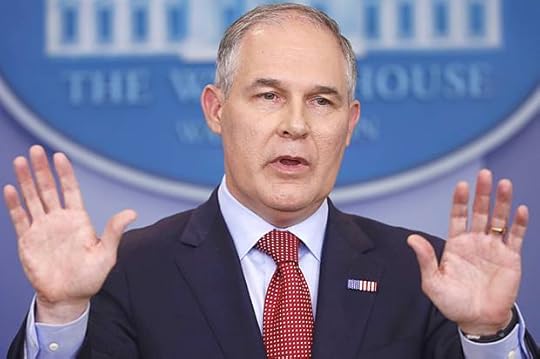
Scott Pruitt (Credit: AP/Pablo Martinez Monsivais)
Scott Pruitt, the Administrator of the Environmental Protection Agency, has called for a “red team-blue team” review to challenge the science behind climate change. “The American people deserve an honest, open, transparent discussion about this supposed threat to this country,” he said on a radio show, adding he hoped to hold the exercise in the fall.
Most commonly, red team-blue team reviews are used as a mechanism to improve security of information systems or military defenses. The blue team is associated with an institution, the owner of an asset or a plan. The red team is charged with attacking the blue team, with the goal of revealing vulnerabilities.
I have participated in red team-blue team exercises and in many reviews that share characteristics with their philosophy. Whether the review is cast as a hostile intruder, a devil’s advocate or scenario planning, there is always the spirit of challenge by an antagonist.
This can take many forms. As a climate researcher, I have participated in reviews where weather and climate projects were investigated for budget reductions. Others examined the role of high-risk research and technology along the critical path of a project. I have participated in studies of management acumen and how projects fit into a national and international political and scientific context.
I have also participated in forums of scientific debate. This is where scientists provided evidence supporting competing arguments to explain unresolved observed behaviors. The arguments were testable, hence, scientific hypotheses.
From my experience in both types of review, I can say confidently that red team-blue team exercises are not a mechanism for scientific debate. They are not designed to take a testable hypothesis and then look at whether observations and theory support or refute it. They are more like Heath Ledger’s Joker in The Dark Night, causing disruption, distortion and chaos.
And so, Pruitt’s call for a red team-blue team review is not designed to test the scientific robustness of our knowledge of climate change. Rather, it is part of the political strategy to continue the dissolution of the EPA’s climate change activities and to destroy President Obama’s efforts to address climate change — something Pruitt and the Trump administration have made their stated goal.
Scientific reviews of climate science
Administrator Pruitt’s call for a red team-blue team review has been discussed by a number of other scientists. In a Washington Post commentary, Ben Santer, Kerry Emanuel and Naomi Oreskes discuss peer review and its checks and balances. Former Director of the Office of Science and Technology Policy John Holdren, in the Boston Globe, takes on the political nature of Pruitt’s position and documents the extensive reviews of climate change science by many organizations.
These many reviews of climate change science are motivated by the consequences of climate change. The disruptions to the world are enormous and costly. To intervene and limit those disruptions requires changes in how we use energy, and essentially, the elimination of fossil fuel emissions. For decades it has been in the best interest of our prosperity and environmental security to get the answer on climate science right. Hence, reviews have been carried on from many perspectives.
Indeed, law professor Daniel Farber has reviewed the practice of climate science and concluded, “Climate scientists have created a unique institutional system for assessing and improving models, going well beyond the usual system of peer review. Consequently, their conclusions should be entitled to considerable credence by courts and agencies.”
Farber not only cites the attributes of peer review, but also the extensive community efforts to compare and improve the computer models scientists use to project future climate change. Further, the review process of the Intergovernmental Panel on Climate Change contributes to the robustness of the basic conclusions that the Earth’s surface air temperature will warm, ice will melt, sea level will rise and the weather will change.
So the scientific investigation of the Earth’s climate does not suffer from a lack of scrutiny.
Political challenges to climate science
In addition, climate change science has been the target of political and public debate for decades. In 1995 the U.S. House of Representatives Committee on Science held hearings on the integrity of climate models. The results of those hearings persist today in the political and societal discourse, and there have been many subsequent political hearings.
The political and public attacks on climate science have led to reactionary research. This research has served to strengthen the foundation of climate science. On the other hand, no findings have seriously challenged that foundation. Therefore, resources have been spent, and we have delayed action on climate change to check the dots on the i’s.
Administrator Pruitt’s call for the red team-blue team review seems inspired by a Wall Street Journal commentary by physicist and New York University professor Steven Koonin, who called for an adversarial, public red team-blue team review of climate science. Koonin maintained that such a review would be a step toward “evidence-based policymaking and against the politicization of science.” A goal would be to “Put the ‘consensus’ to a test, and improve public understanding, through an open and adversarial process.”
In my view, however, the “consensus” argument to support the correctness and the reliability of climate change is poorly posed. It is an argument based on polls that maintain that an overwhelming majority of climate scientists have accepted the basic conclusions of a warming climate. The consensus argument likely emerged as a tactic for communication, but it is not a prudent tactic. It sets up a choice: Whose side are you on? Who or what do you believe?
More fundamentally, the consensus argument is not an argument of climate science; it’s one of communication or political science. Hence, putting “consensus” to the test is not accomplished by an adversarial review of climate science. An adversarial review of climate science, especially one motivated by a hostile political appointee, serves only to escalate the politicization of climate science and undermine evidence-based policy making.
Been here before
At the beginning of the Bush-Cheney administration in 2001, the White House asked a committee of the National Academy of the Sciences for a short-fuse, less-than-one-month evaluation of the key uncertainties of climate science as well as an analysis of the Intergovernmental Panel on Climate Change summary reports. The committee included professor Richard Lindzen, frequently cited as a climate change skeptic in the public media.
The committee stated in their conclusion, “The committee generally agrees with the assessment of human-caused climate change presented in the IPCC Working Group I scientific report, but seeks here to articulate more clearly the level of confidence that can be ascribed to those assessments and the caveats that need to be attached to them.”
During the 1990s there were many reviews of climate science and proposed climate programs. As one example, JASON Reviews were an especially interesting form of review. I made presentations at these reviews. Professor Koonin took part in these reviews as well.
According to the Federation of American Science, “JASON is an independent scientific advisory group that provides consulting services to the U.S. government on matters of defense science and technology. It was established in 1960.” JASON was formed originally by scientists, mostly physicists, associated with the World War II Manhattan Project. They have been used to review climate science several times, and their membership has included those counted as climate skeptics, for example, Freeman Dyson.
The JASON review has some elements of a red team review – an independent team of highly trained and accomplished scientists examines proposed and existing research programs.
I never saw any indication of the JASON panel questioning the underlying tenets of climate science or the methodology of climate scientists.
What Pruitt’s review is really about
Given the many instances of scientific, political and policy reviews over decades, one cannot legitimately argue that an adversarial-style process will shed light on core climate science.
Instead, what Pruitt has proposed has all of the characteristics of formalizing as behavior, if not policy, a federal disruption of climate policy.
 His tactic can be viewed only as spectacle to advance a political agenda. Such spectacle will be based on emotional appeal and will rely on manipulating the message about the role that uncertainty plays in scientific investigation. The goal will be the amplification and persistence of public doubt — a goal that would be undoubtedly achieved.
His tactic can be viewed only as spectacle to advance a political agenda. Such spectacle will be based on emotional appeal and will rely on manipulating the message about the role that uncertainty plays in scientific investigation. The goal will be the amplification and persistence of public doubt — a goal that would be undoubtedly achieved.
Richard B. Rood, Professor of Climate and Space Sciences and Engineering, University of Michigan






